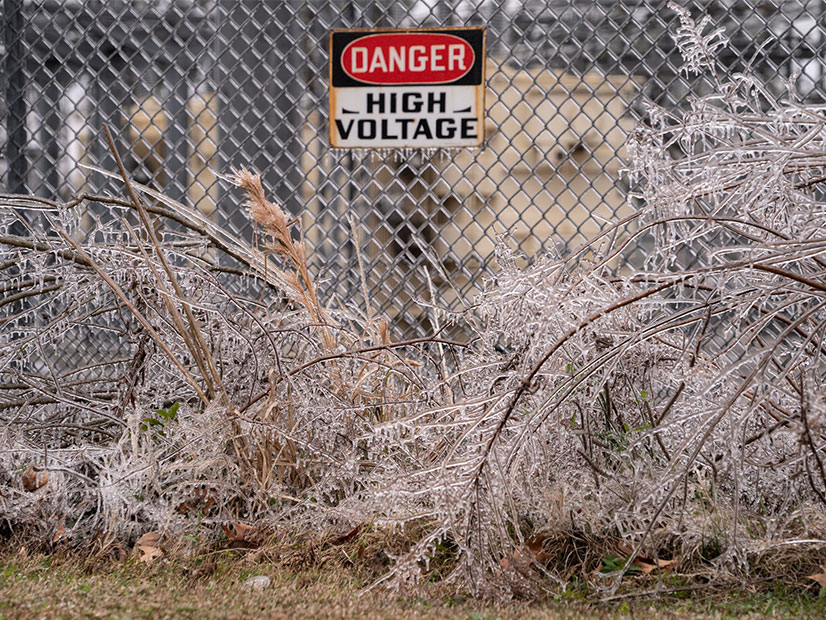MISO concluded this week that its current suite of resource adequacy solutions is the best path forward to coping with extreme cold snaps.
The RTO closed the chapter into mid-February’s pervasive arctic blast on Tuesday with a final report and stakeholder workshop. Staff said the winter event provides further justification to introduce a four-season capacity auction and corresponding reserve margin targets paired with a capacity accreditation based upon generators’ recent availability. (See MISO Underscores Need for RA Action in Winter Storm Review.)
MISO Vice President of Strategy Wayne Schug told stakeholders that the vast majority of lessons learned from the event are items already under consideration in the stakeholder process.
“Which is a good thing. It means we’re anticipating things to come,” Schug said.
MISO Senior Director of Operations Planning J.T. Smith said MISO has experienced four severe cold snaps in the past seven years, in 2014, 2018, 2019 and now 2021. MISO has amassed new preparations from each one, he said.
“We walked into this event about as prepared as we could be. …At some point, it’s about the availability of the fleet that is provided to us,” Smith said.
What set apart this cold weather, Smith said, is the freeze stretched from Canada to the Gulf of Mexico and affected MISO’s neighbors, making imports unworkable as load stayed stubbornly high.
“The cold wasn’t extreme. It covered the entire footprint,” he said. “…We were talking about the North, the Central and the South regions.”
By Feb. 17, 40% of MISO’s fleet was unavailable, most because of forced outages.
“You can’t operate the system with normal to high loads with 40% of your system offline,” Smith said.
MISO curtailed 700 MW in the South system Feb. 17 to match load to generation availability and ward off uncontrolled cascading outages. The RTO also ordered localized rolling blackouts because of transmission emergencies Feb. 15-16 in Louisiana, Central Illinois and Southeast Texas.
Control room staff could use more detailed and real-time data from members to make better informed decisions in the heat of the moment, Schug said.
“History is an insufficient guide to the future,” Schug said of MISO’s historical data. “…What we considered rare instances 10 years ago are now commonplace.”
He also said events considered impossible just five years ago are now plausible.
“We need to be planning for those in advance,” he said.
Schug also said ISOs might not be the best outlet for verifying any new weatherization standards are met.
MISO and the Organization of MISO States have lately been meeting about beefing up and combining generator fuel and weatherization surveys in anticipation of new industry weatherization standards.
Staff also said expanded transmission capacity can ease future winter storms. MISO leadership has repeatedly said the added transfer capability of MISO’s last long-range transmission portfolio, approved a decade ago, helped the footprint escape a more destructive emergency.
MISO Executive Director of Systems Operations Renuka Chatterjee asked stakeholders to picture the MISO management of a hypothetical 6,000 smaller generators versus its current fleet of approximately 1,600 generators.
“The fleet is continuously changing. Each quarter, it changes,” she said.
Again, several stakeholders pressed MISO to release a list of generator outages by fuel type during the event.
“My sense is we probably had more fuel supply issues this time than in past polar vortexes,” Schug said, adding that MISO will try to compile a list.
Southern Renewable Energy Association Executive Director Simon Mahan asked how much the event cost MISO overall.
MISO executives said they have yet to calculate total costs.
MISO plans to file its capacity auction changes in September. The grid operator is currently working through analyses on its proposed capacity accreditation. It will present results in July to a stakeholder community that has asked MISO to reinforce its proposal with research.
“The timing is tight,” Scott Wright admitted to stakeholders at a June 9 Resource Adequacy Subcommittee meeting. “…I’m aware we have a lot of big discussions in front of us to get to a filing.”
At the May Market Subcommittee, MISO Executive Director of Market Operations Shawn McFarlane said there was “decent likelihood” that MISO enters emergency procedures this summer.
One Bankruptcy Issue
MISO said the cold snap also triggered a first-of-its-kind bankruptcy and default predicament. Following the event, the RTO said it investigated its market participants to see if any had been exposed to adverse financial impacts in other markets. It found that the Brazos Electric Power Cooperative, also an ERCOT member, was hit with more than $2 billion in charges in the ERCOT market and declared bankruptcy. (See ERCOT’s Brazos Electric Declares Bankruptcy.)
However, MISO found that it had not been mentioned as a critical vendor in Brazos’ bankruptcy filing, despite it supplying transmission service to the cooperative. The RTO said bankruptcy law “puts an automatic stay in place in the action, which prohibits MISO from sending certain notices, such as a notice of default, to the party.”
MISO has intervened in the bankruptcy proceedings to try to recover some of the almost $9 million owed to it by Brazos (21-30725).
The grid operator said in light of this situation, it might pursue some Tariff changes “to protect the market” during volatile pricing events.




